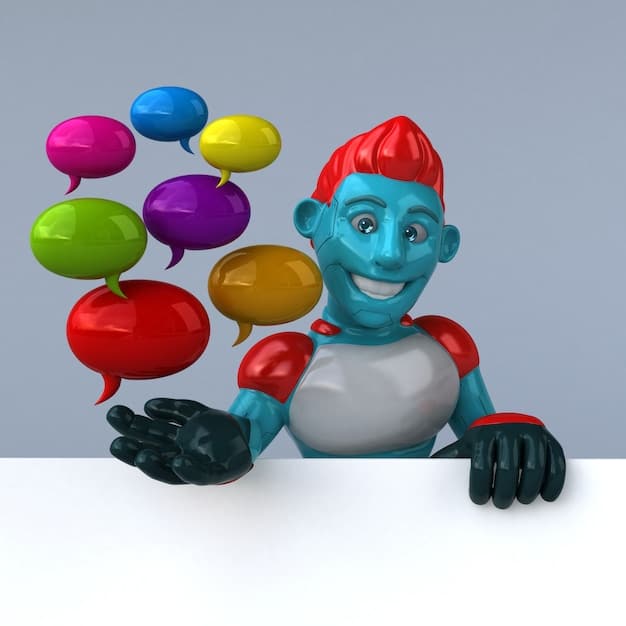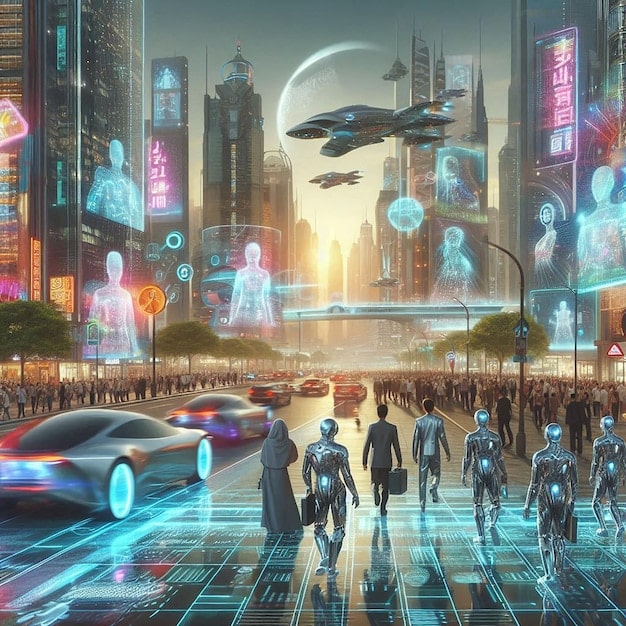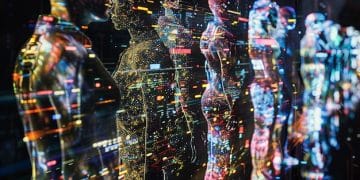NPC Trend Explained: 2025’s Viral Meme & Culture Impact

The “NPC” trend, exploding in 2025, refers to content creators emulating non-player characters from video games, interacting robotically with live stream viewers, monetizing repetitive actions and phrases, and profoundly influencing online entertainment, parasocial relationships, and digital commerce while sparking debates on authenticity.
In the ever-evolving landscape of digital culture, few phenomena have captured global attention quite like the NPC trend. What began as a niche internet novelty has rapidly ascended to become one of 2025’s most viral memes, profoundly reshaping how we perceive online performance, interaction, and even authenticity itself. This article delves into how something seemingly so simple could achieve such ubiquitous influence, exploring its origins, mechanics, cultural impact, and the fascinating discussions it provokes.
The Genesis of a Phenomenon: From Gaming to Global Stage
The term “NPC,” or “Non-Player Character,” originates from video games, referring to characters controlled by artificial intelligence rather than a human player. These characters often exhibit repetitive movements, limited dialogue, and predictable behaviors. The internet’s fascination with mimicking these digital entities didn’t emerge overnight; it’s a culmination of various cultural touchpoints and technological advancements.
Initially, content creators started impersonating NPCs as a form of comedic relief, often within gaming communities. They would adopt stiff postures, utter programmed-sounding phrases, and react to virtual stimuli in deliberately unhuman ways. This early phase was primarily about irony and inside jokes among gamers, a playful nod to the sometimes clunky artificial intelligence encountered in virtual worlds.
Early Viral Sparks and Platform Evolution
The groundwork for the trend’s explosion was laid by platforms that prioritized live interaction and direct monetization. Sites like Twitch and TikTok offered creators immediate feedback and financial incentives, fostering an environment where novel forms of engagement could thrive. The real breakthrough came as these performances moved beyond mere imitation, evolving into a live, interactive spectacle.
- TikTok’s Role: The short-form video platform proved to be fertile ground. Its algorithm favored innovative content and quick-hit engagement, allowing NPC impersonations to reach a broader audience beyond gaming circles.
- Live Streaming Innovation: Creators started performing as NPCs during live streams, reacting to digital “gifts” from viewers as if they were real-world items or commands. A virtual rose might elicit a robotic “Thank you” or a specific dance move.
- Monetization Mechanics: The direct link between viewer gifts (which translate to real money for creators) and specific NPC reactions created a unique, gamified form of performance art. This financial incentive was a significant accelerant.
As the trend gained traction, the performances became more elaborate and nuanced. Creators began developing distinct NPC personas, complete with unique catchphrases, costumes, and a repertoire of reactions tied to different virtual gifts. This shift from simple mimicry to complex, interactive performance highlighted the growing sophistication of online entertainment and the creative ways individuals are leveraging digital spaces for expression and income.
The Mechanics of Mockery: How NPC Streaming Works
Understanding the “how” behind the NPC trend’s explosion requires a closer look at its operational mechanics. It’s not just about acting robotic; it’s a meticulously crafted performance designed for maximum engagement and, critically, monetization on live-streaming platforms.
At its core, NPC streaming involves a creator adopting the persona of a non-player character. This typically means limited facial expressions, repetitive body movements (often jittery or stiff), and a small set of pre-programmed phrases. The key differentiator, however, is the direct interaction with the audience, mediated by digital gifts.
The Ritual of Digital Gifts and Reactions
Viewers on platforms like TikTok or Twitch purchase virtual gifts (e.g., roses, ice cream cones, hats) using real money. When a viewer sends a gift, the NPC streamer performs a specific, pre-assigned action or utters a particular phrase. This creates a fascinating loop: viewers “control” the NPC by sending gifts, and the NPC reacts in character, reinforcing the illusion of a programmed entity.
- Repetitive Phrases: Common phrases include enthusiastic thank-yous for gifts (“ice cream so good!”), generic observations, or simple reactions to imaginary scenarios.
- Canned Animations: Streamers develop a series of small, repeatable movements—a head tilt, a small wave, a quick dance—that are triggered by specific gifts.
- Parasocial Play: This direct, albeit artificial, interaction fosters a unique form of parasocial relationship. Viewers feel a sense of agency, directing the performance in real-time, even if the reactions are pre-determined.
The success of an NPC streamer often hinges on their consistency and the creativity of their character. The most popular streamers have developed distinct personas that audiences find both amusing and strangely compelling. This level of dedication transforms a simple concept into a sustained form of digital entertainment, drawing millions of viewers and generating significant revenue.
Cultural Resonance: Beyond the Screen

The NPC trend’s virality isn’t simply a testament to the internet’s capacity for bizarre entertainment; it reflects and amplifies broader cultural conversations. Its impact extends far beyond the confines of live streams, touching upon perceptions of authenticity, human connection, and the boundaries between virtual and real life.
One of the most striking aspects of the trend is its ability to hold a mirror to societal anxieties about genuine interaction. In an increasingly digital world, where many relationships are mediated through screens, the deliberate artificiality of NPC performances can be both unsettling and oddly comforting. It offers a clear distinction between human spontaneity and programmed responses, even as it blurs other lines.
Authenticity and Performance in the Digital Age
The NPC trend implicitly questions what constitutes authenticity online. Are these streamers “real” in their performance, or are they simply actors playing a role? For many viewers, the appeal lies precisely in this performative aspect, a theatrical experience where the boundaries of the character are explicitly defined. This stands in contrast to the often curated, yet ostensibly “authentic,” personas common on other social media platforms.
Another fascinating dimension is the trend’s commentary on conformity. The “NPC” label has been weaponized in political discourse to dismiss individuals perceived as blindly following a narrative or lacking independent thought. The meme’s explosion on platforms where creators openly embrace the NPC identity can be seen as a subversion of this derogatory label, reclaiming it as a form of performance art rather than an insult.
The Economic Engine: Monetization and the Creator Economy
No discussion of the NPC trend would be complete without addressing its profound economic implications. What started as a whimsical internet joke has evolved into a significant revenue stream for many content creators, showcasing the dynamic and often unpredictable nature of the modern creator economy.
The direct monetization model, primarily through digital gifts purchased by viewers, is the lifeblood of NPC streaming. Each gift, whether a virtual rose, a fire emoji, or a cartoon heart, represents a small amount of real money contributed by the audience. For streamers, these accumulate rapidly, potentially generating substantial income.
- Micro-transactions at Scale: The beauty of the model lies in its ability to convert numerous small transactions into significant earnings. A viewer might spend just a few cents on a single gift, but hundreds or thousands of viewers doing so over a stream can add up.
- Dedicated Fanbases: Successful NPC streamers cultivate highly engaged and loyal fanbases. These “super fans” are often willing to spend more on gifts to see their favorite creators perform specific reactions or simply to show support.
- Platform Cut: While creators earn a percentage of the revenue from gifts, the streaming platforms themselves also benefit significantly, taking a cut from every transaction. This mutual benefit incentivizes platforms to continue promoting and innovating around such content.
This economic model challenges traditional notions of work and entertainment. Creators are essentially performing a digital vaudeville, where their “act” is a continuous, interactive loop with their audience. The skill lies not just in the performance but also in developing a character that resonates with viewers and encourages sustained engagement and financial support.
Controversies and Criticisms: The Darker Side of the Trend
While the NPC trend is often seen as harmless fun, its rapid ascent has not been without its share of controversies and criticisms. These concerns touch upon various aspects, from ethical implications of viewer engagement to the potential impact on creators’ well-being and the broader perception of online content.
One of the primary criticisms revolves around the perceived exploitation of the human element. Some argue that by reducing creators to robotic, repetitive characters, the trend devalues genuine human connection and expression. This can be particularly troubling when impressionable audiences, especially children, engage with content that blurs the lines between person and program.
Ethical Dilemmas and Online Exploitation
There’s also the question of viewer manipulation. The gamified interaction, where specific actions are triggered by monetary gifts, can create an almost addictive feedback loop for some viewers, encouraging excessive spending. Critics worry about the psychological impact on individuals who might be financially vulnerable or prone to compulsive behaviors.
Furthermore, the repetitive nature of NPC performances can take a toll on creators. Maintaining a consistent, robotic persona for hours on end, often while enduring an onslaught of comments and gift triggers, can be mentally and physically exhausting. The pressure to constantly perform and monetize can lead to burnout, underscoring the demanding nature of this unique form of digital labor.
- Dehumanization: Some view the trend as a form of self-dehumanization, where creators willingly suppress their individuality for views and monetary gain.
- Mimicry vs. Creativity: Debates arise regarding whether the trend encourages genuine creativity or simply skilled mimicry, with some arguing it lowers the bar for online content.
- “Begging” Criticism: The direct solicitation of gifts is sometimes equated to digital begging, sparking discussions about the dignity of online work and the ethical boundaries of monetization.
These criticisms highlight the complex ethical landscape of the creator economy, where novel forms of interaction and monetization constantly emerge, often outstripping societal norms and regulatory frameworks. As the trend evolves, addressing these concerns will be crucial for fostering a healthier and more sustainable online environment.
The Future of NPC: Evolution or Extinction?

As with all viral internet phenomena, the question inevitably arises: what does the future hold for the NPC trend? Will it continue to evolve and integrate into the broader fabric of online culture, or is it destined to fade into digital obscurity, becoming another fleeting meme of yesteryear?
Several factors suggest that the NPC trend, or at least its underlying principles, will continue to exert influence. The core mechanics of interactive performance and direct monetization have proven incredibly sticky and lucrative. Creators are constantly innovating, pushing the boundaries of what an “NPC” can be, incorporating more complex narratives, character development, and even branching storylines into their streams.
Integration with AI and Virtual Avatars
One potential evolutionary path involves deeper integration with artificial intelligence. As AI technologies become more sophisticated, it’s conceivable that future NPC streamers might leverage AI to generate more dynamic, nuanced, and perhaps even personalized reactions to viewer inputs. This could elevate the performance beyond human mimicry to something truly hybrid—part human, part machine.
- Virtual Identities: The rise of metaverses and advanced virtual avatars could see the NPC trend transition into entirely digital, AI-enhanced personas that exist persistently within virtual worlds.
- Augmented Reality: Future iterations might blend AR with real-world interactions, turning mundane environments into interactive stages where performers can act out their NPC roles in augmented reality.
- Cross-Platform Expansion: The principles of NPC performance—gamified interaction and direct fan-to-creator monetization—could be adopted by other platforms and content types, from virtual concerts to interactive storytelling.
However, like any trend, it faces the constant challenge of maintaining novelty and relevance. Audiences can quickly tire of repetition, and the next big thing is always just around the corner. For the NPC trend to endure, it must continue to adapt, reinvent itself, and find new ways to captivate and engage a global audience, proving that its appeal is more than just a fleeting digital oddity.
| Key Aspect | Brief Description |
|---|---|
| 🎮 Origins | From video game “Non-Player Characters,” mimicking robotic behaviors. |
| 💸 Monetization | Creators earn via live stream digital gifts triggering specific reactions. |
| 🤳 Cultural Impact | Challenges authenticity, reclaims “NPC” label, fosters unique parasocial bonds. |
| 🔮 Future Outlook | Potential AI integration, virtual avatars, and cross-platform expansion. |
Frequently Asked Questions About the NPC Trend
The NPC trend involves content creators mimicking “Non-Player Characters” from video games during live streams. They perform repetitive actions and phrases in response to digital gifts from viewers, creating a robotic and interactive entertainment experience. This trend exploded in popularity in 2025, becoming a significant part of viral online content.
NPC streamers monetize their content through digital gifts sent by viewers on live-streaming platforms. Viewers purchase virtual items, which translate to real money for the creator. Each gift often triggers a specific, pre-programmed reaction or phrase from the NPC performer, creating a direct financial incentive for engagement.
The NPC meme has sparked discussions about authenticity in digital spaces, the nature of performance, and parasocial relationships. It influences how audiences interact with creators, offering a unique blend of controlled entertainment and direct viewer participation, while also inspiring debates on originality and human connection in an increasingly virtual world.
Yes, criticisms include concerns about potential dehumanization of creators, the ethical implications of encouraging excessive spending through gamified interactions, and the general impact on mental well-being due to the repetitive nature of the performances. Debates also exist regarding the trend’s contribution to genuine creativity versus mere mimicry.
The future of the NPC trend is likely to involve further evolution, potentially through deeper integration with AI technologies to create more dynamic and personalized performances. We might see its principles adapted across various digital platforms, including virtual metaverses and augmented reality experiences, as creators continue to innovate within this unique entertainment niche.
Conclusion
The NPC trend, from its humble origins in gaming culture to its explosive virality in 2025, stands as a testament to the internet’s boundless capacity for innovation, entertainment, and, at times, unsettling social commentary. It has masterfully blended performance art with direct monetization, creating a new genre of interactive live content that challenges our understanding of authenticity and connection. While it has spurred debates on exploitation and artistic merit, its undeniable impact on online culture, the creator economy, and the very concept of digital interaction ensures its place as a significant phenomenon that continues to evolve and fascinate.





